Gardenia Plant
- January 9, 2024
- 0 comment
The Gardenia plant, a true gem in the world of gardening, is celebrated for its captivating beauty and enchanting fragrance. Belonging to the Rubiaceae family, these evergreen shrubs boast lush, dark green foliage that provides an elegant backdrop to their exquisite white blooms. The most popular species, Gardenia jasminoides, commonly known as Cape Jasmine, is adored for its large, creamy-white flowers and glossy leaves. Beyond its aesthetic appeal, the Gardenia plant holds cultural significance, symbolizing purity, love, and mystery in various traditions.

With a preference for partially shaded areas and well-draining, acidic soil, Gardenias require specific growing conditions that, when met, result in robust and healthy plants. From landscaping ideas and indoor cultivation tips to the rich symbolism woven into cultural traditions, the Gardenia plant offers a world of possibilities for garden enthusiasts. Whether you’re a seasoned gardener or a beginner, the Gardenia plant invites you to explore its fragrant beauty and unlock the secrets to successful cultivation.
| Specification | Details |
|---|---|
| Family | Rubiaceae |
| Genus | Gardenia |
| Common Species | Gardenia jasminoides (Cape Jasmine) |
| Growth Habit | Evergreen shrub |
| Foliage | Dark green, glossy |
| Flowers | White, fragrant |
| Ideal Sunlight | Partial shade |
| Soil Type | Well-draining, acidic |
| Soil pH Range | 5.0 – 6.0 |
| Watering Needs | Consistently moist, avoid waterlogged soil |
| Pruning | Regular pruning for shape and air circulation |
| Fertilizing Schedule | Balanced fertilizer, specific for acid-loving plants |
| Common Issues | Yellowing leaves, bud drop, root rot |
| Pest Control | Natural and chemical-free methods |
| Landscaping Uses | Gardens, borders, containers |
| Indoor Cultivation | Suitable for containers, requires proper lighting and humidity |
| Cultural Symbolism | Purity, love, mystery |
| Mythical Associations | Varies across different cultures and folklore |
| Sustainability Practices | Eco-friendly cultivation, organic pest control |
| Popular Varieties for Beginners | Gardenia ‘Kleim’s Hardy,’ Gardenia augusta ‘Radicans’ |
| Aromatherapy Uses | Stress reduction, calming atmosphere |
Unveiling the Secrets of this Fragrant Beauty

Gardenia plants, known for their captivating fragrance and elegant appearance, have become a staple in gardens around the world. In this comprehensive guide, we will delve into the various aspects of Gardenia plants, from types and ideal growing conditions to care and maintenance, ensuring you unlock the secrets to successful cultivation.
Gardenia plants, belonging to the Rubiaceae family, are evergreen shrubs celebrated for their lush, dark green foliage and exquisite white flowers. Renowned for their sweet fragrance, they add a touch of luxury to any garden.
Gardenias are not just plants; they are an experience. Their aesthetic appeal and aromatic blooms make them a prized possession for avid gardeners. Let’s embark on a journey to discover the enchanting world of Gardenia cultivation.
Ideal Growing Conditions
Sunlight and shade requirements
Gardenias thrive in partially shaded areas with filtered sunlight. However, adequate light is crucial for robust growth and abundant flowering. Find the right balance to ensure your Gardenia flourishes.
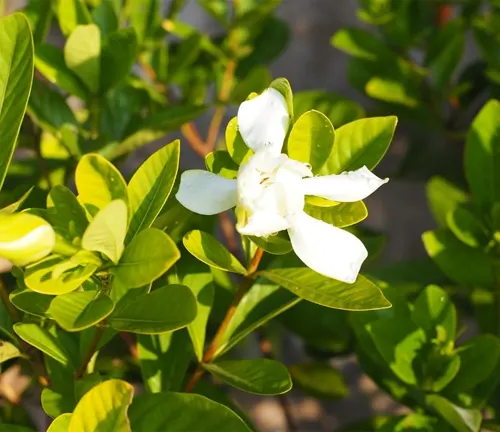
Soil type and pH levels
Well-draining, acidic soil with a pH range between 5.0 and 6.0 is ideal for Gardenias. Learn the importance of soil preparation and how it influences the health of your plants.
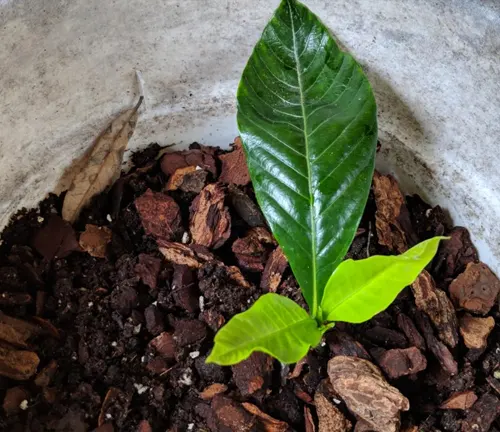
Watering needs
Discover the watering preferences of Gardenias, striking a balance between hydration and avoiding waterlogged conditions. Proper watering is key to preventing common issues like root rot.
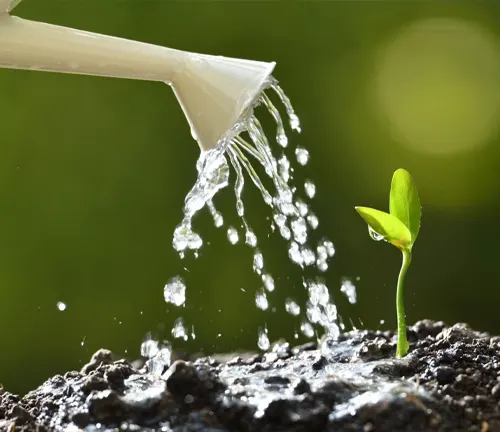
Planting and Transplanting
Choosing the right location
Selecting the perfect spot for your Gardenia involves considering sunlight, soil conditions, and surrounding plants. Make informed decisions to provide an optimal environment for growth.
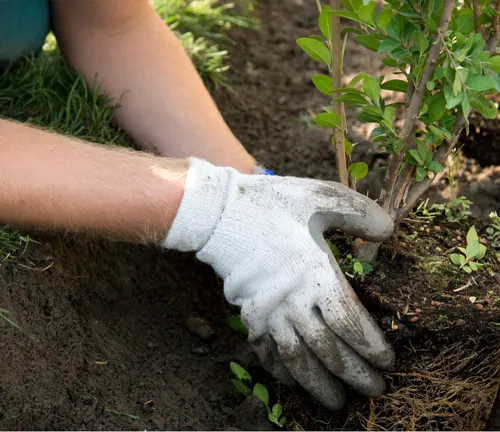
Steps for successful planting
Follow a step-by-step guide for planting Gardenias, covering aspects such as digging the hole, adding amendments, and proper spacing. Implement these practices to establish healthy and thriving plants.
Transplanting tips
For those considering moving their Gardenias, whether due to space constraints or aesthetic preferences, discover effective tips for successful transplantation without causing stress to the plants.
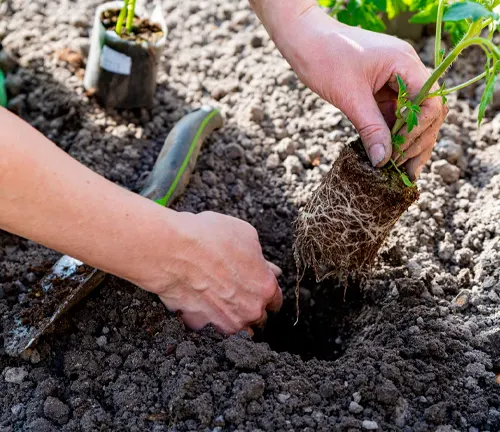
Care and Maintenance
Pruning techniques
Unlock the secrets of proper pruning to shape your Gardenia, promote air circulation, and encourage new growth. Mastering pruning techniques is essential for maintaining an attractive and healthy plant.
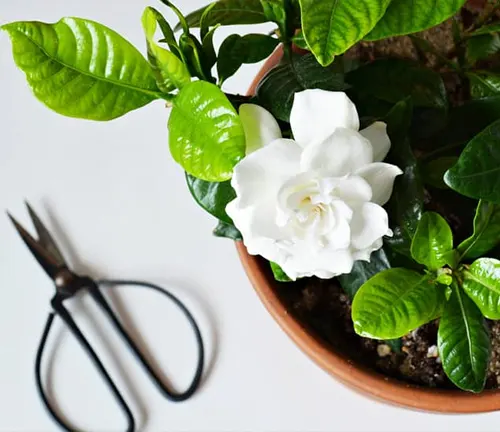
Fertilizing schedule
Understand the nutritional requirements of Gardenias and create a fertilizing schedule that supports vigorous blooming. Learn about suitable fertilizers and the importance of balanced nutrients.
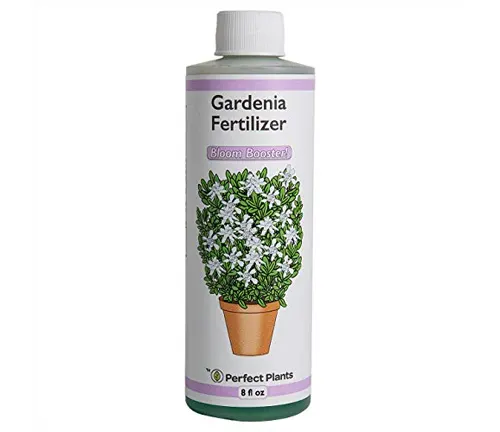
Pest control measures
Guard your Gardenia against common pests like aphids and whiteflies. Explore natural and chemical-free methods to keep your plants pest-free without harming the environment.

Common Gardenia Plant Issues

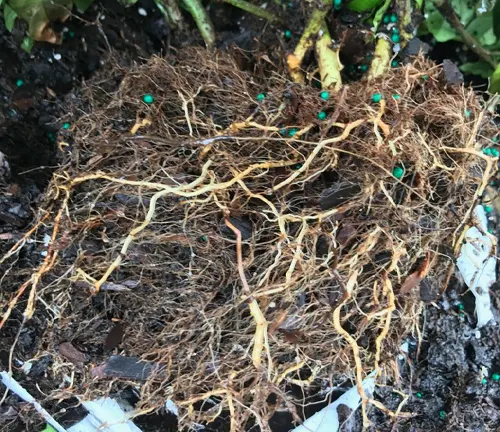
Yellowing leaves
Identify the causes of yellowing leaves, from nutrient deficiencies to improper watering. Implement corrective measures to restore your Gardenia’s vibrancy.
Bud drop
Understand the factors contributing to bud drop in Gardenias and adopt preventive measures to ensure your plants retain their buds for a stunning display of flowers.
Root rot
Learn to recognize the signs of root rot and implement strategies to prevent and treat this common issue. Proper soil drainage is crucial in averting root rot in Gardenias.
Landscaping with Gardenias
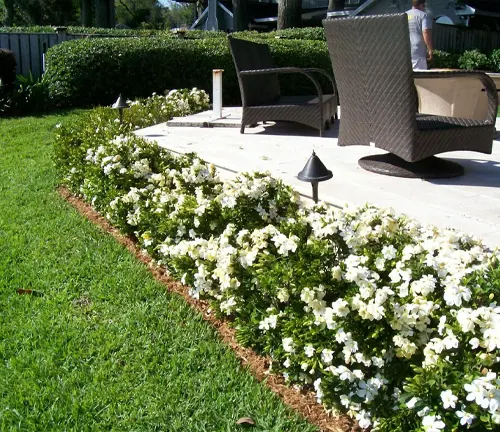
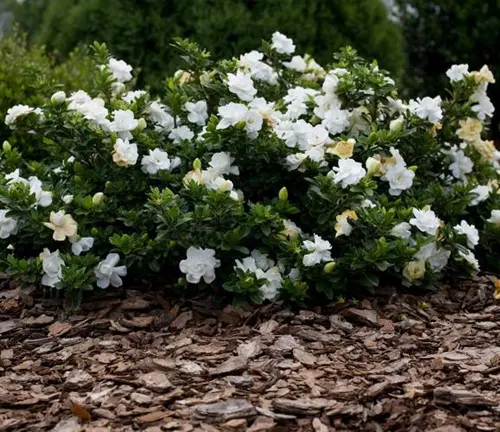
Design ideas for gardens
Incorporate Gardenias into your landscape design, considering their height, color, and fragrance. Create a visually appealing garden that showcases the beauty of these enchanting plants.
Complementary plants
Discover the perfect plant companions for Gardenias, forming harmonious combinations that enhance the overall aesthetic appeal of your garden. Explore options that complement the fragrance and appearance of Gardenias.
Health Benefits of Gardenia
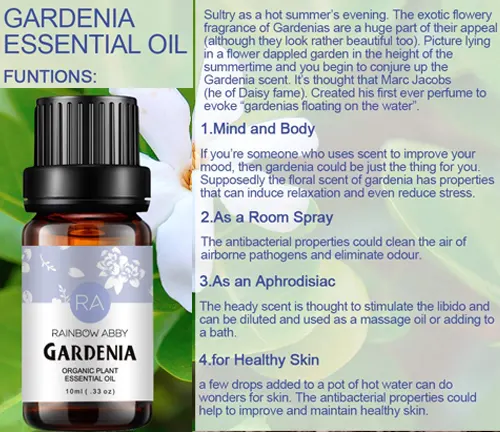
Aromatherapy uses
Unwind with the soothing aroma of Gardenia flowers. Explore how Gardenias are utilized in aromatherapy to reduce stress, promote relaxation, and create a calming atmosphere.
Stress reduction properties
Delve into the scientific basis behind the stress-reducing properties of Gardenias. Learn how these plants contribute to a tranquil environment, benefiting both mental and physical well-being.
Cultivating Gardenia Indoors
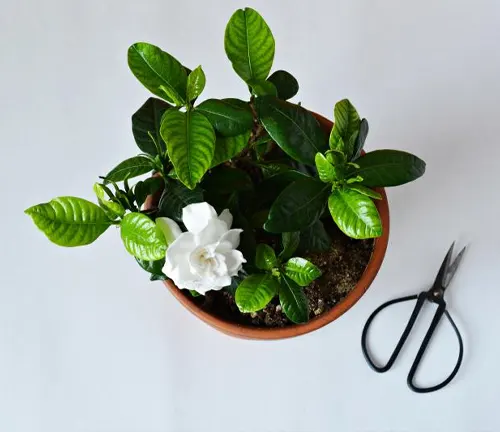
Container gardening
Discover the joys of cultivating Gardenias indoors using containers. Explore suitable potting mixes, container sizes, and indoor care practices to enjoy these fragrant blooms year-round.
Indoor care tips
Understand the unique requirements of Gardenias when grown indoors. From lighting conditions to humidity levels, ensure your indoor Gardenias thrive and bring beauty to your living spaces.
Popular Gardenia Plant Varieties for Beginners
Low-maintenance options
For gardening enthusiasts new to cultivating Gardenias, explore varieties known for their resilience and ease of care. Start your Gardenia journey with confidence, choosing plants that are forgiving to beginners.
Suitable for different climates
Discover Gardenia varieties that thrive in various climates, from temperate to tropical. Ensure success in your gardening endeavors by selecting plants well-suited to your local weather conditions.
Gardenia Flower Arrangements
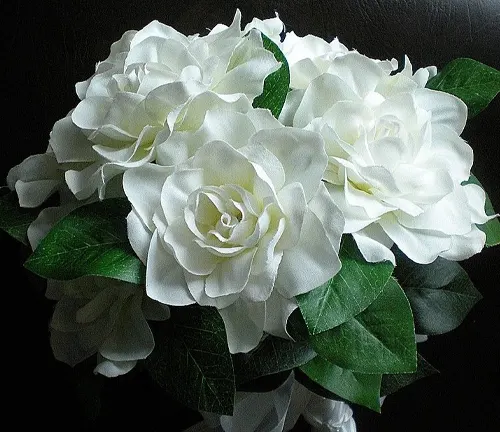

Creating stunning bouquets
Explore creative ways to incorporate Gardenia blooms into captivating floral arrangements. From bridal bouquets to table centerpieces, elevate your flower arrangements with the timeless elegance of Gardenias.
Tips for floral displays
Learn the art of preserving and showcasing Gardenia flowers in arrangements. Discover tips for maximizing their longevity and maintaining their fresh and fragrant allure.
Symbolism and Traditions
Cultural significance
Uncover the cultural symbolism attached to Gardenias in various societies. From purity and love to mystery, explore the rich tapestry of meanings woven into the fabric of Gardenia traditions.
Events and celebrations
Learn how Gardenias play a role in significant events and celebrations. Whether weddings, funerals, or cultural ceremonies, understand the symbolic importance of Gardenias in various rituals.
Different Species
Gardenia jasminoides
Also known as Cape Jasmine, this is one of the most popular and widely cultivated species. It features large, creamy-white flowers and glossy leaves.
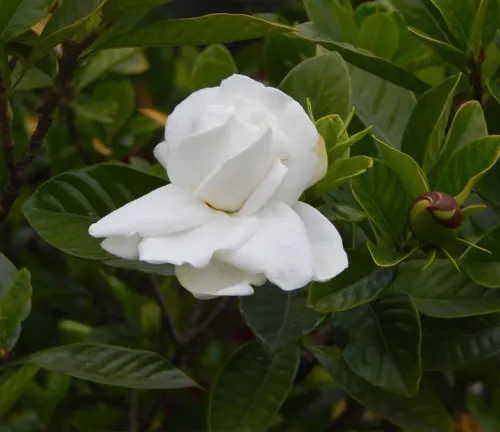
Gardenia thunbergia
Commonly referred to as Starry Gardenia, this species showcases smaller, star-shaped flowers and a more compact growth habit compared to Gardenia jasminoides.

Gardenia augusta ‘Radicans’
This is a low-growing variety with a spreading habit, making it suitable for ground cover or as a container plant. It produces attractive white flowers.
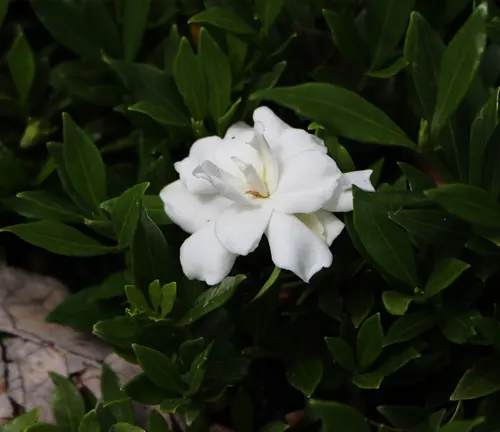
Gardenia ‘Kleim’s Hardy’
Known for its cold-hardiness, this variety is a favorite among gardeners in cooler climates. It still offers the classic Gardenia fragrance but is more resilient to lower temperatures.
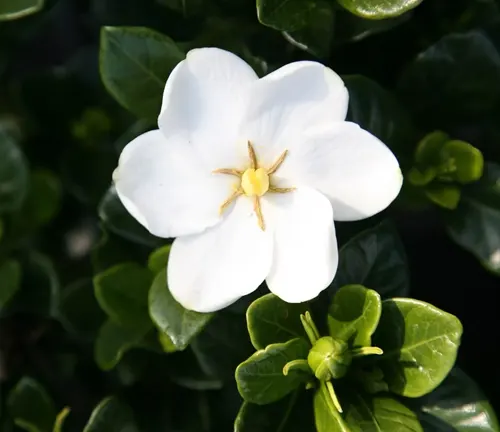
Gardenia taitensis
Native to Tahiti, this species is also known as Tahitian Gardenia. It features fragrant, pinwheel-shaped flowers and is often cultivated for its ornamental value.

Gardenia tubifera
Native to Southeast Asia, this species is recognized for its tube-like flowers. It has a unique appearance compared to other Gardenia varieties.
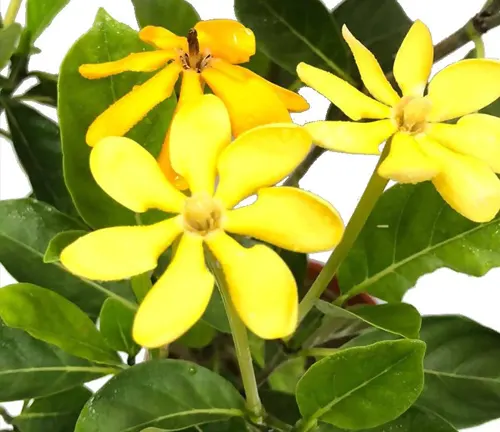
Gardenia carinata
Found in tropical regions, this species is characterized by its elongated leaves and fragrant, creamy-white flowers. It adds a tropical flair to gardens.

Gardenia radicans
A low, spreading variety similar to Gardenia augusta ‘Radicans,’ it is often used as ground cover and is valued for its abundant white blooms.

Frequently Asked Questions (FAQs)
- Can Gardenias thrive in full sunlight?
While Gardenias prefer partial shade, some varieties can tolerate a few hours of direct sunlight. Finding the right balance is crucial for their well-being. - How often should I water my Gardenia?
Watering frequency depends on factors like climate and soil. Generally, Gardenias like consistently moist soil but not waterlogged conditions. - What causes yellowing leaves in Gardenias?
Yellowing leaves can result from various factors, including nutrient deficiencies, improper pH levels, or inadequate sunlight. Identifying the specific cause is key to addressing the issue. - Are Gardenias suitable for indoor cultivation?
Yes, many Gardenia varieties can thrive indoors. Proper care, including suitable lighting and humidity levels, is essential for their well-being. - Do Gardenias attract pests?
While Gardenias can attract pests like aphids and whiteflies, implementing preventive measures and natural pest control options can keep these issues in check. - How do I propagate Gardenia plants?
Gardenias can be propagated through stem cuttings. Taking cuttings from healthy plants and providing the right conditions for rooting can lead to successful propagation. - What is the best time to prune Gardenias?
Pruning is typically done after the flowering season, which is in late spring or early summer. This allows the plant to recover and produce new growth before the next blooming cycle. - How can I prevent bud drop in Gardenias?
Adequate watering, proper fertilization, and helping consistent growing conditions prevent bud drop in Gardenias. Sudden changes in environment or care can lead to this issue. - Are Gardenias deer-resistant?
Gardenias are not known for being deer-resistant. In areas with deer populations, protective measures may be necessary to prevent damage to Gardenia plants. - What is the lifespan of a Gardenia plant?
With proper care, Gardenia plants can live for several decades. Their lifespan is influenced by factors like growing conditions, maintenance, and the specific variety. - Can I grow Gardenias in containers?
Yes, Gardenias can be grown in containers, making them suitable for patios and small gardens. Ensure well-draining soil and provide the necessary care for container gardening success. - Do Gardenias have any medicinal uses?
While primarily grown for ornamental purposes, Gardenias are sometimes used in traditional medicine for their purported anti-inflammatory and antioxidant properties. - How can I enhance the fragrance of Gardenia flowers?
Placing Gardenia plants in areas with warm temperatures and high humidity can enhance the fragrance of their flowers. Adequate sunlight and proper care contribute to stronger scent production. - Can Gardenias be grown from seeds?
While Gardenias can be grown from seeds, it’s a more challenging and time-consuming method compared to propagation through cuttings. Seeds may take a longer time to germinate and establish. - Are Gardenias affected by climate change?
Changes in temperature and weather patterns can impact the health of Gardenia plants. It’s essential to monitor and adapt care practices based on the specific climate conditions in your region.


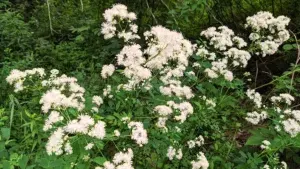


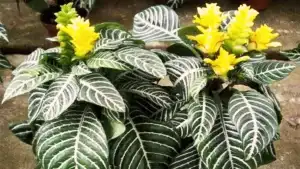

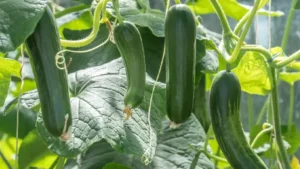
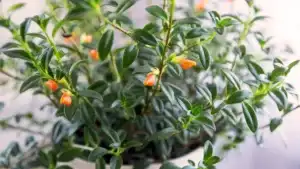


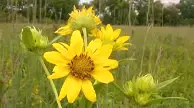
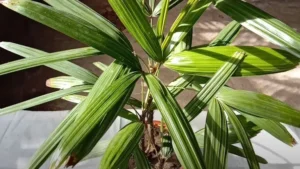

Leave your comment